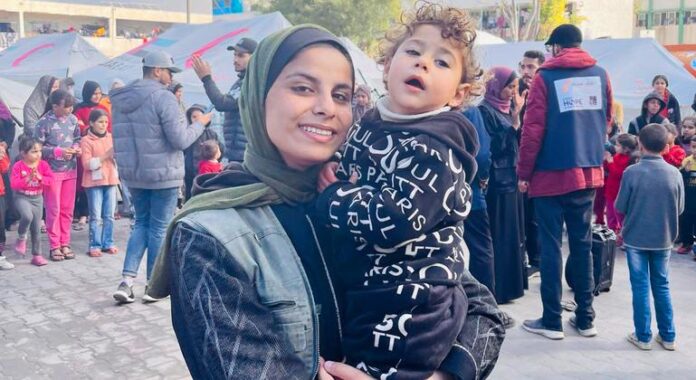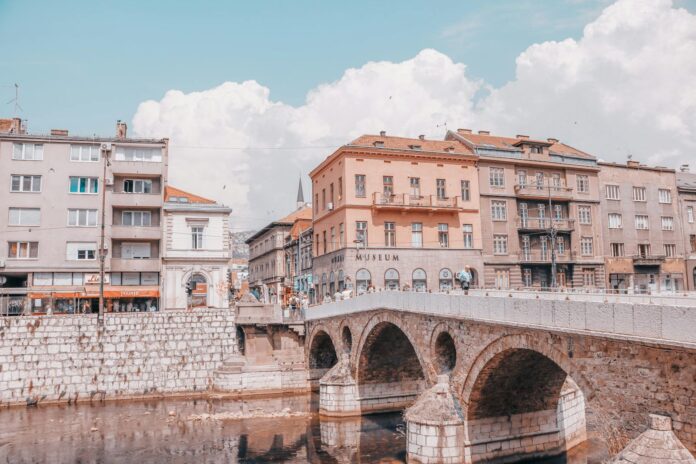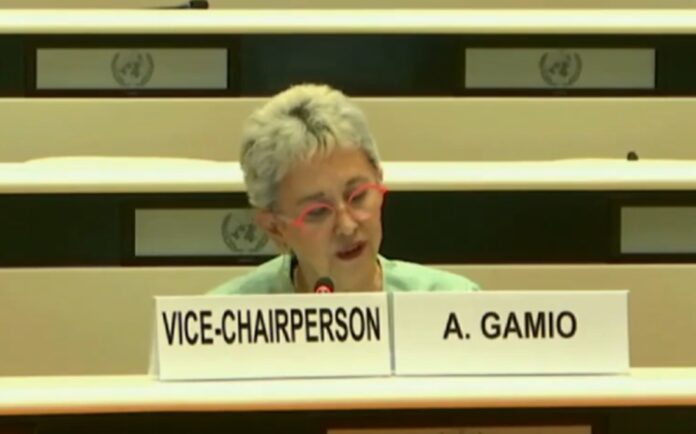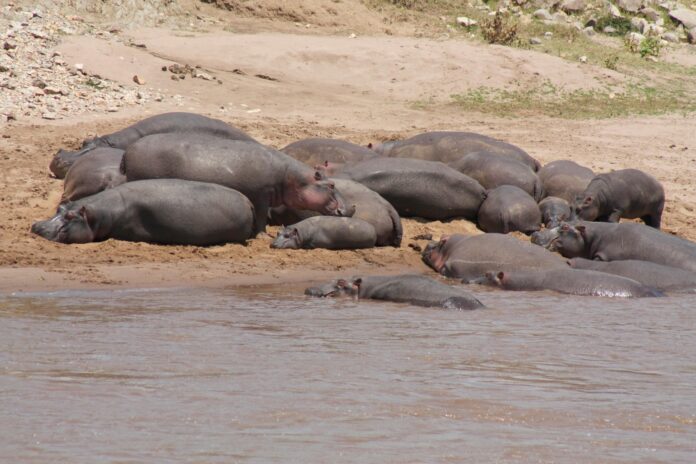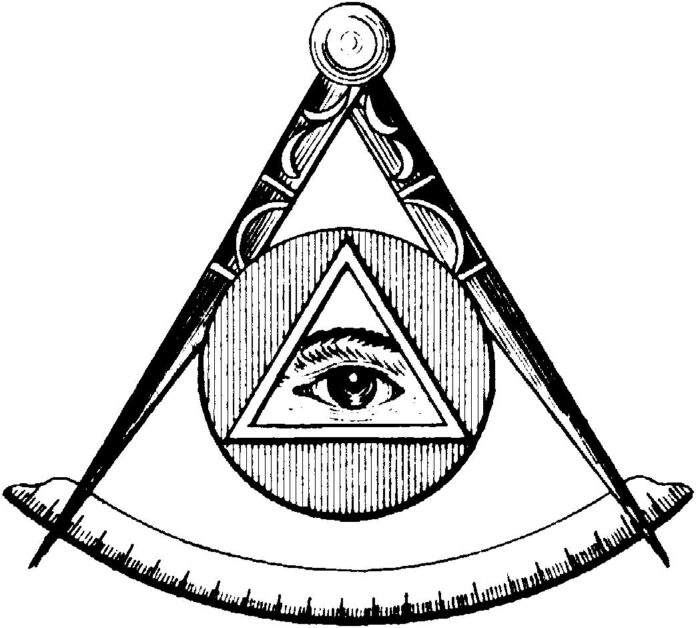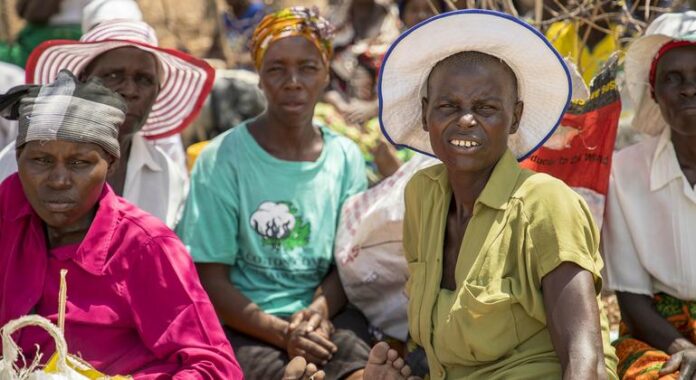A volunteer with Sharek Youth Forum, a local non-governmental organization (NGO) in war-torn Gaza, Ms. Al Shamali has currently been displaced for the ninth time and lives in a crowded refugee camp as the conflict with Israel enters its 10th month.
Before the latest eruption of violence, she ran her own media and graphic design company, where she honed the leadership skills she is now teaching to hundreds of her fellow Gazans.
“I was motivated to alleviate the suffering of Gaza’s citizens,” she said.
Amid the continued forced displacement and destruction in Gaza, children are being provided with crucial psychosocial support.
‘Young people embody the soul and energy of our country’
“I want to show the world that no circumstances will extinguish the lifeline of hope for our young people,” she explained.
Ms. Al Shamali and her colleagues are providing practical support, from educational programmes to distributing safe water in displacement camps and cultivating a spirit of solidarity among Gaza’s youth.
She described her experience as a volunteer as “transformative,” explaining that it has helped her to navigate crises, strengthened her resilience and confirmed her belief in the potential of future generations “because young people embody the soul and energy of our country”.
Children in Gaza hold lanterns to celebrate the advent of Ramadan in March. (file)
Catalysts for change
Some 1.9 million people are currently displaced in Gaza, many of them already multiple times. Most are living in temporary, insecure and unsanitary shelters, vastly increasing their exposure to diseases and gender-based violence, yet with scarce access to even the most basic health care.
A youth programme launched in December 2023 with support from the UN sexual and reproductive health agency, UNFPA, has so far engaged almost 1,000 volunteers to assist more than 90,000 young people across Gaza.
One million children in Gaza now require psychological support.
Funded by Education Above All, the initiative offers psychological counselling, stress relief activities, support for survivors of gender-based violence and essential supplies and advice during public health campaigns.
Such efforts are essential not only to meet the immediate psychosocial needs of young people, but also to equip youth affected by conflict and trauma with skills to rebuild a more peaceful future. Studies from conflict- and post-conflict settings show that support programmes led by peers and survivors can significantly improve the health and wellbeing of women and young people who are vulnerable to violence.
“The most valuable investment lies in empowering them as the owners of their ideas, initiatives and projects,” Ms. Al Shamali said. “They can find solutions to society’s challenges as leaders, innovators and as our future.”
The volunteers have also distributed essential menstrual hygiene and sanitary supplies to women and girls, rebuilt classrooms and installed bathrooms and solar panels in displacement camps.
Ahmed Halabi was born and raised in Gaza City and now volunteers with local NGO and UNFPA partner Save Youth Future Society.
Youth resilience amid war in Gaza
“Children are experiencing what I endured in my youth: pain, siege and war,” said Ahmed Halabi. “No child should suffer like this.”
Mr. Halabi, 26, was born and raised in Gaza City and now volunteers with local NGO and UNFPA partner Save Youth Future Society. He channels his own childhood experience living under Israeli occupation into designing youth-led initiatives that provide psychological support primarily for children, teenagers and women.
Psychological services are critical in Gaza, where one million children now require this support. Reports of gender-based violence are rising in Gaza City and the north as services shutter and staff are forced to flee constant attacks and insecurity.
One initiative encourages young men and boys to assume positive gender roles in their families and lessen their stress and anger by playing such sports as football. Doctors also dress up as clowns to visit children and provide first aid while local NGOs the Charity Fund and Eid Lantern distribute gifts and lanterns for Eid, a commitment to restoring some sense of normality amid the chaos of war.
“We saw the happiness among the children, the laughter as if a spark of hope had returned to their eyes,” he said. “The parents too would watch their children with smiles and joy.”
What began with 10 volunteers assisting 50 children has now expanded to 40 volunteers reaching over 300.
Ahmed Halabi uses his own childhood experience living under Israeli occupation to design youth-led initiatives that provide psychological support for children, teenagers and women.
A safe space for the future
Extraordinary challenges remain, namely a lack of fuel, exorbitant rental and operational costs and a severe lack of supplies.
To help plug these gaps, UNFPA is supporting six safe spaces in displacement camps in Gaza City and northern Gaza, which provide psychosocial support, sexual and reproductive health care, referrals for legal services and essential hygiene kits. Youth volunteers at these spaces engage other young people in arts and crafts, sport, singing, theatre and games.
Although themselves traumatised by the suffering of their families, friends and fellow Gazans, those working in these roles are carrying on, relentless in their dedication.
“If you ask me about my biggest gains from this volunteering,” Mr. Halabi said, “I would say everything I have been able to provide to the displaced children of my city.”



